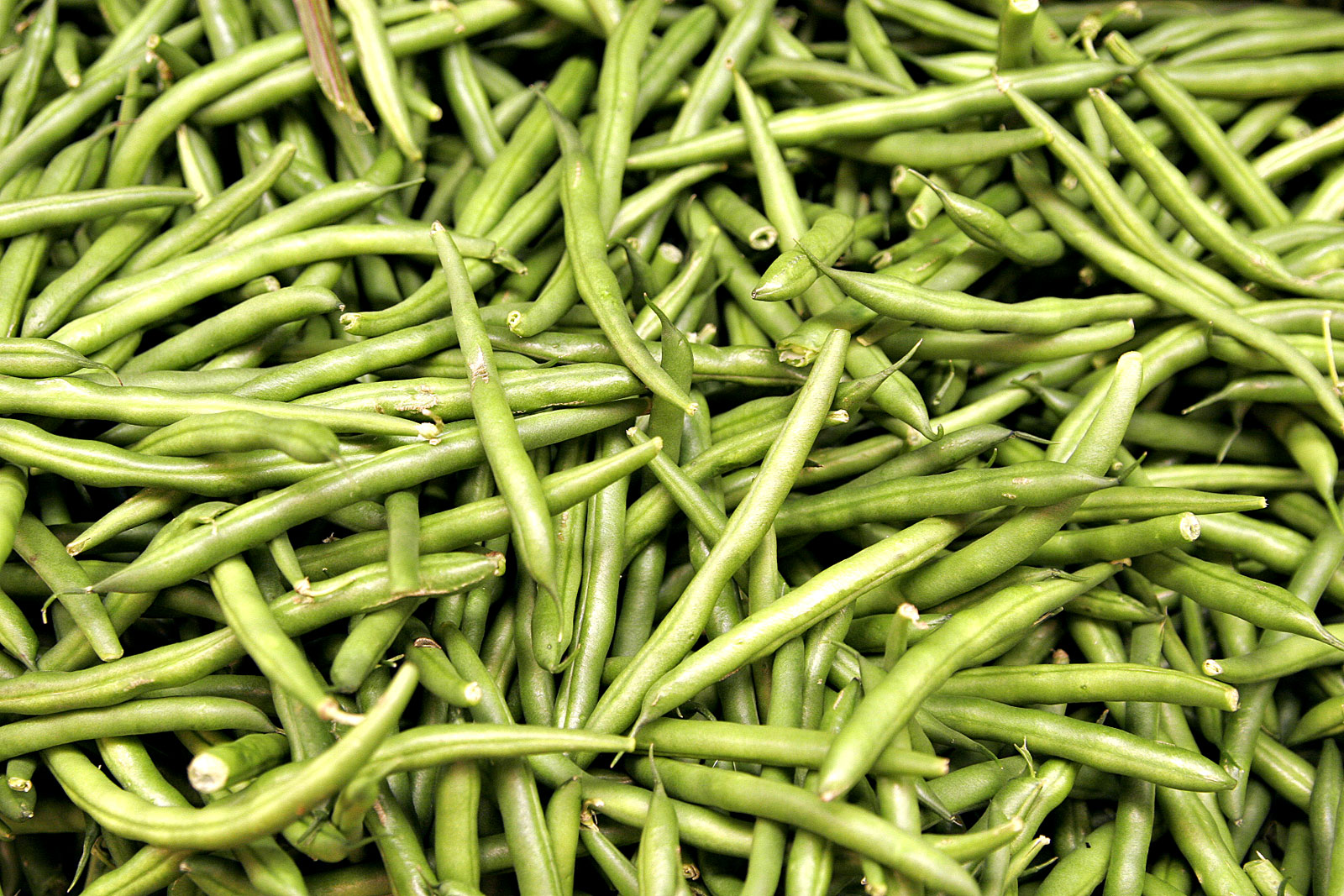
Green bean
Green beans are young, unripe fruits of various cultivars of the common bean (Phaseolus vulgaris),[1][2] although immature or young pods of the runner bean (Phaseolus coccineus), yardlong bean (Vigna unguiculata subsp. sesquipedalis), and hyacinth bean (Lablab purpureus) are used in a similar way.[3] Green beans are known by many common names, including French beans (French: haricot vert),[4] string beans (although most modern varieties are "stringless"),[4] and snap beans[4] or simply "snaps."[5][6] In the Philippines, they are also known as "Baguio beans" or "habichuelas" to distinguish them from yardlong beans.[7]
"String beans" redirects here. For the vaudeville entertainer, see Butler May. For the 1918 film, see String Beans (film).They are distinguished from the many other varieties of beans in that green beans are harvested and consumed with their enclosing pods before the bean seeds inside have fully matured. An analogous practice is the harvest and consumption of unripened pea pods, as is done with snow peas or sugar snap peas.
Nutritional value per 100 g (3.5 oz)
131 kJ (31 kcal)
2.7 g
Quantity
Quantity
Quantity
90 g
Uses[edit]
As common food in many countries, green beans are sold fresh, canned, and frozen. They can be eaten raw or steamed, boiled, stir-fried, or baked. They are commonly cooked in other dishes, such as soups, stews, and casseroles. Green beans can be pickled, similarly to cucumbers.
A dish with green beans common throughout the northern US, particularly at Thanksgiving, is green bean casserole, a dish of green beans, cream of mushroom soup, and French-fried onions.[10]
Nutrition[edit]
Raw green beans are 90% water, 7% carbohydrates, 2% protein, and contain negligible fat (table). In a 100-gram (3.5-ounce) reference amount, raw green beans supply 31 calories and are a moderate source (range 10–19% of the Daily Value) of vitamin C, vitamin K, vitamin B6, and manganese, while other micronutrients are in low supply (table).








